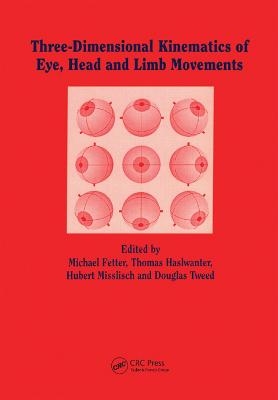
Three-dimensional Kinematics of the Eye, Head and Limb Movements
Taylor & Francis Ltd (Verlag)
978-90-5702-148-0 (ISBN)
- Titel z.Zt. nicht lieferbar
- Versandkostenfrei innerhalb Deutschlands
- Auch auf Rechnung
- Verfügbarkeit in der Filiale vor Ort prüfen
- Artikel merken
In this book, some of the world's leading scientists of motor control discuss how the brain represents and tranforms the kinematic variables of movement. Background chapters explain the basic concepts - non-commutativity, redundancy and the classical laws - and their application to normal function and motor disorders, and shorter articles describe current research. The contributions are based on presentations at a symposium held in Tübingen in August 1995. The wide scope of the book should enable researchers to gain an overview of current research, but should also help newcomers tot he field to get a good understanding of the questions and problems involved in three-dimensional movement control.
Michael Fetter studied Medicine in Tubingen and received his medical degree from the Eberhard-Karls-University. From 1985-1986 he worked as a postdoctoral fellow at the neuro-otology laboratory of the Johns Hopkins Hospital in Baltimore, investigating the acute and chronic effects of unilateral vestibular lesions. From 1987-1995 he worked as a resident at the Department of Neurology in Tubingen. He is currently a clinical consultant and head of the neuro-otology laboratory in Tubingen. His main interests are the three-dimensional properties of the vestibulo-ocular system and the adaptation of three-dimensional simulation and analysis techniques for clinical investigations. Thomas Haslwanter received his undergraduate degree in Physics from the University of Innsbruck. His PhD work, which was done at the ETH (Swiss Institute of Technology) and the University Hospital in Zurich, concentrated on control strategies for three-dimensional eye, head and arm movements. His current interests, spawned by a two and a half year postdoctoral stay in Sydney, are the development of video-based systems for the accurate measurement of three-dimensional eye movements, and the application of three-dimensional eye and head movements into the field of medical research and diagnosis. Hubert Misslisch studied Biology in Tübingen, Germany. He prepared his PhD at the Department of Neurology of the University of Tübingen, working on three-dimensional properties of the vestibulo-ocular reflex, its interaction with smooth pursuit as well as eye-head and head movement control in three dimensions. He is currently working at the Department of Medical Physics and Biophysics in Nijmegen on neuronal parietal cortex mechanisms. Douglas Tweed studied Medicine in Winnipeg, and Physiology and Mathematics in London, Canada. He now divides his time between London and Tubingen, working on mathematical models of sensory-motor transformations.
Part 1. Historical Overview Part 2. Kinematic pronciples of Eye Movements Part 3. Saccades and Vergence PArt 4. Smooth Pursuit and Vestibulo-Ocular Reflex Part 5. Eye Movements and Pathology Part 6. Head and Limb Movements Part 7. Models Part 8. Measurement Techniques
| Erscheint lt. Verlag | 9.9.1997 |
|---|---|
| Verlagsort | London |
| Sprache | englisch |
| Maße | 170 x 245 mm |
| Gewicht | 1050 g |
| Themenwelt | Naturwissenschaften ► Biologie ► Zoologie |
| Naturwissenschaften ► Physik / Astronomie ► Angewandte Physik | |
| ISBN-10 | 90-5702-148-X / 905702148X |
| ISBN-13 | 978-90-5702-148-0 / 9789057021480 |
| Zustand | Neuware |
| Haben Sie eine Frage zum Produkt? |
aus dem Bereich


